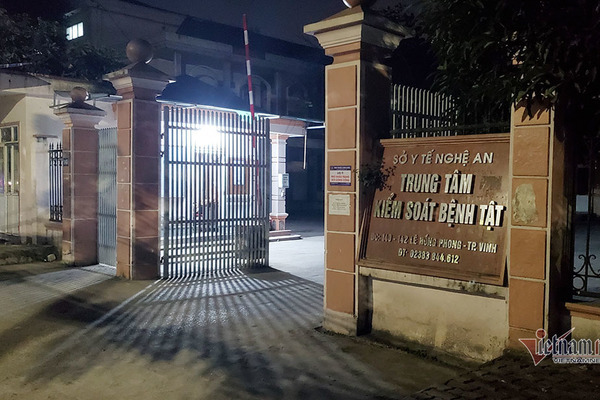Kon TumIn the spring, the Xe Dang people in Tu Mo Rong district cut holes in the trunks of ancient trees for wild bees to build nests and wait for the summer to collect honey.
Ngoc Linh primeval forest is tens of thousands of hectares wide, located in the territory of two provinces Kon Tum and Quang Nam. In Tu Mo Rong district, the Xe Dang people for generations have mainly lived on benefits from old forests and grown wet rice. In particular, the profession of “raising” wild bees in tree hollows is preserved and passed down through generations.

The tree hole of Mr. A Occasion lured the wild bees into the next nest. Image: Tran Hoa
When spring begins, the people of Mang Ri, Ngoc Yeu, and Te Xang communes bring axes and axes into the forest to choose ancient trees that have hollowed out wide and deep holes in their bodies. Then, they used wooden sticks and mud to seal the entrance to the cave, leaving only a few small holes for the bees to enter. The inside of the cavity is completely empty, there is no need to catch the queen bee to “seduce” like traditional farming.
The job seems simple, but it takes one person an entire day to complete a niche. According to the experience handed down by his father, Mr. A Dip (31 years old, Mang Ri commune) had to choose trees that did not melt sap and were wet. The hole must be near the stream and the mouth of the nest must be in the direction of the stream. The hole should not be on high, because the wind many bees do not enter.
Mr. A Op has 15 beehives over 50 cm deep, 40 cm wide and 40 cm high scattered in the deep forest. Of these, more than half of the holes were chiseled by himself, the rest were bought from the village elders and colleagues, each nest from 500,000 to one million dong.
“This year’s crop is bad, so only 7 niches have bees nesting,” said Mr. Op, himself a security guard at the 40-hectare Ngoc Linh ginseng garden, every day on the way, he sometimes visits. the beehives are about to get honey. He calculates that in the middle of this month, each nest collects 2-3 liters of honey, selling it for 500 thousand VND per liter. 10 years working in the profession of “raising” wild bees, on average, each crop collects 10 million dong, the maximum year is about 15 million dong.

Mr. A Occasion has 15 niches “raising” bees under the canopy of Ngoc Linh forest. Image: Tran Hoa
In addition to Mr. Op, the 10 employees involved in protecting the ginseng garden all have at least 5 niches “raising” bees in the areas they manage. On the trunk are engraved the name of the hive owner, to avoid confusion. Until now, there has never been a hive being stolen because the thief caught will be fined buffaloes and cows by the village…
On the first day of May, Mr. Asu (63 years old) got up early to go to the forest to harvest honey, with luggage including a plastic bag, an ax, and a knife strapped to his waist. At the edge of the forest, he followed the stream for about 50 meters and stopped at the root of an ancient tree, using an ax to pry a piece of wood on the mouth of the hole. The bees panicked and flew out, inside the worker bees covered with three layers of yellow wax. Mr. Duc gently put his hand in the hole, removed all the beeswax and put it in a plastic bag.
Taking the first nest with about two liters of honey, he went deep into the forest to collect the next nest. “When taking honey, absolutely do not burn or use smoke, if you do so, no bees will ever enter that hole again,” Mr. Duc said. This year, there are only about 20 colonies of bees entering the nest, the amount of honey is also less than before.

Before pouring honey into bottles, people use a wax filter. Image: Tran Hoa
Earlier this year, Mr. Duc went into the forest to chisel 10 holes, plus 40 holes in previous years. Every March-April, he visits bees, May-June collects honey. When he was still healthy, there was a season when Mr. Duc made nearly 100 balls, collecting 30-40 liters. In recent years, old age, no longer able to climb the mountain, he sold and gave to his children remote niches, difficult roads. After collecting the batch, he plans to sell the hole or let his children do it, so that he can stay at home to take care of his grandchildren and grow rice.
Mr. Nguyen Minh Tri, Vice Chairman of the People’s Committee of Mang Ri Commune, said that the whole commune has more than 500 households, most of which have several “raised” beehives in the forest to earn extra living. People who do little get a few tens of liters of honey, as much as hundreds of liters.
Ngoc Linh mountain honey is very popular because bees absorb many types of forest pollen, delicious honey, and health supplements. In addition, honey is often used as a tonic for adults and children, treating stomach and intestinal ulcers, sedating, curing headaches and some neurological diseases, dry cough, sore throat, mouth sores, burn wounds.. .
Tran Hoa
at Blogtuan.info – Source: vnexpress.net – Read the original article here



